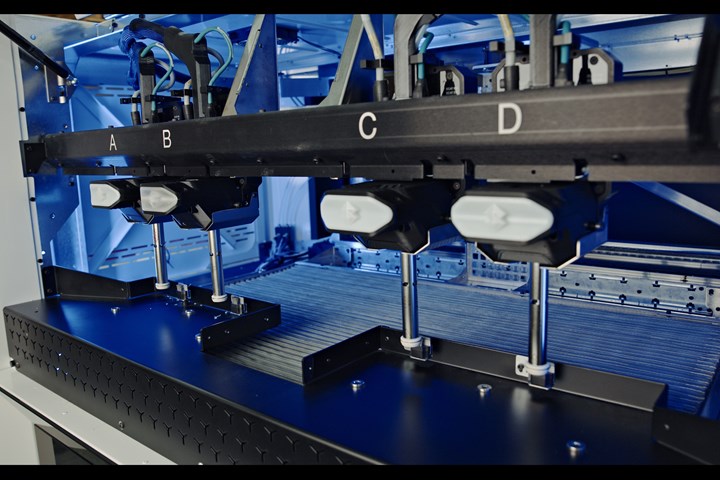FDM Printer Offers Improved Accuracy, Uptime, Output
Stratasys will showcase the F3300 3D printer at Formnext.
Stratasys will showcase the F3300 fused deposition modeling (FDM) printer at , Nov. 7-10 in Frankfurt, Germany. According to the company, the printer offers improved uptime, part quality and output.

Inside the F3300 printer. Photo Credit: Stratasys
The F3300 printer offers increased gantry speeds, faster extrusion rates and autocalibration, resulting in faster overall printing speed. Part quality is also enhanced with a 25% increase in accuracy. The printer also includes machine monitoring, extruder redundancy and a more friendly user interface for maximizing uptime.
Costs of operating the F3300 are expected to be 25-45% lower compared to other Stratasys FDM solutions.
“This next-generation additive manufacturing system empowers customers to scale production and reduce the need to compromise between additive and traditional manufacturing solutions,” says Rich Garrity, chief industrial 大象传媒 unit officer at Stratasys.
The F3300 is the latest addition to the Stratasys FDM family, which includes the F900, F770, F450mc and the F123 series. The F3300 is expected to be available for shipment in 2024.
Related Content
-
BMW Group Vehicle to Adopt 3D Printed Center Console
A vehicle coming to market in 2027 will include a center console carrier manufactured through polymer robot-based large-format additive manufacturing (LFAM).
-
Additive Fusion Technology Optimizes Composite Structures for Demanding Applications
9T Labs continues to enhance the efficiency of its technology, which produces composite parts with intentionally oriented fibers.
-
Smooth Operators: Vibration Compensation Improves Robot Performance
Ulendo is working to apply its vibration compensation algorithm to robots. This application is more complex than its initial market of fused filament fabrication 3D printers, but could result in faster, cheaper robots.







